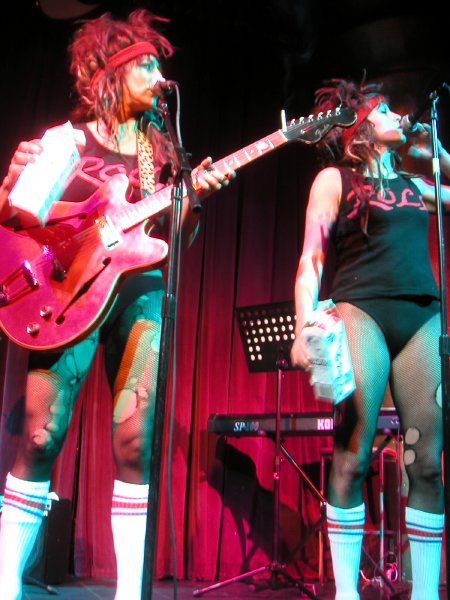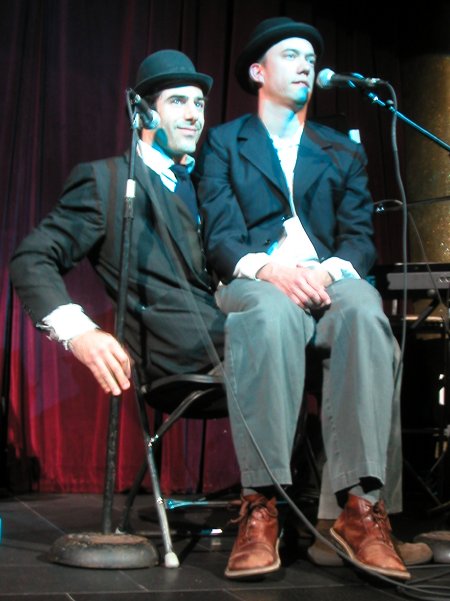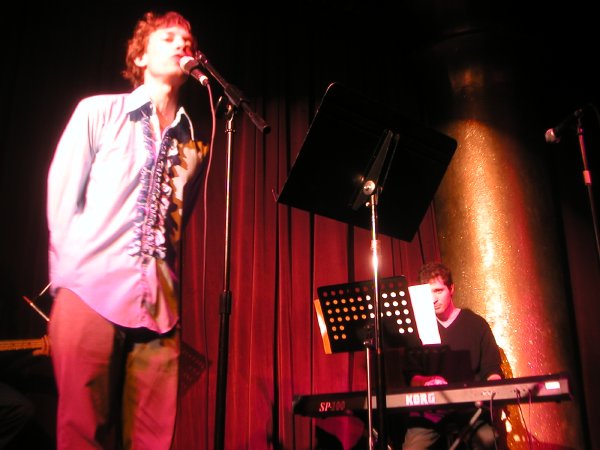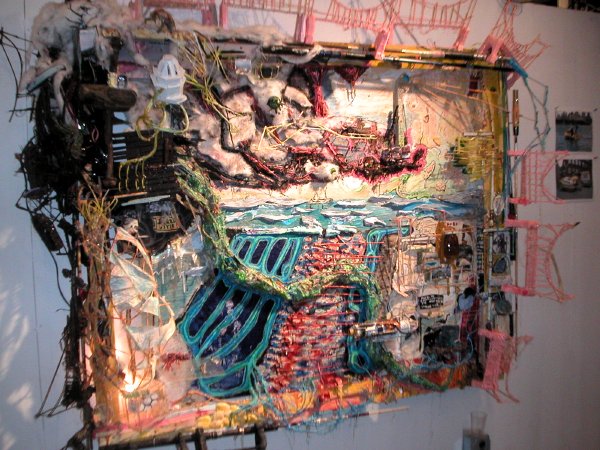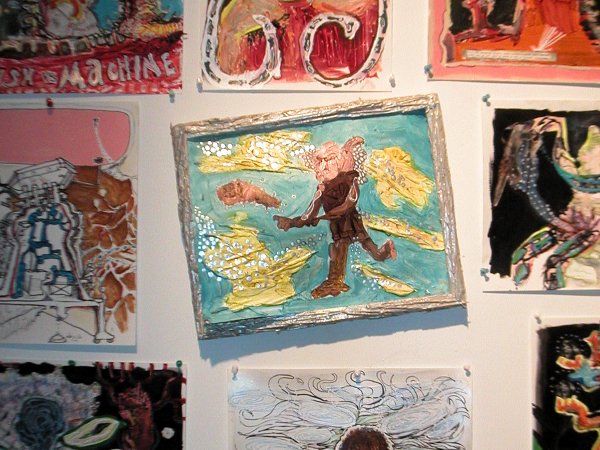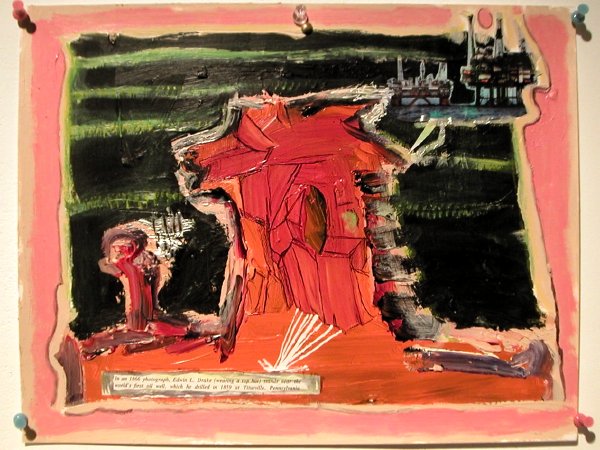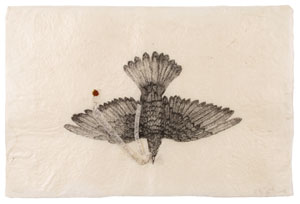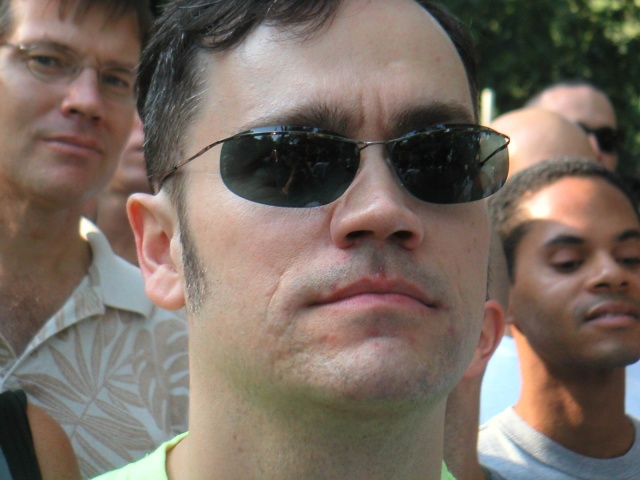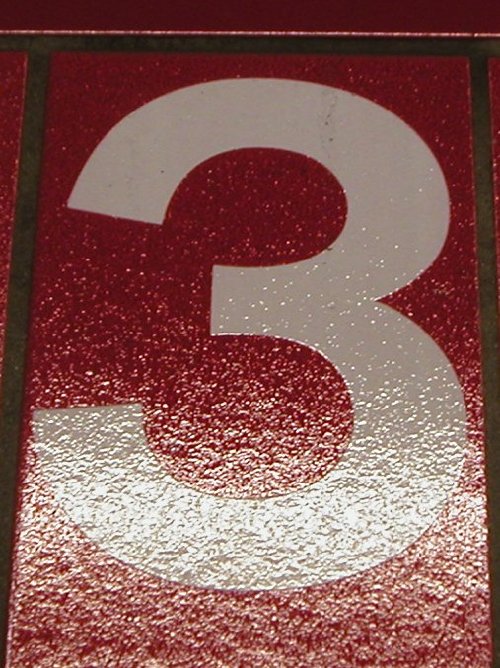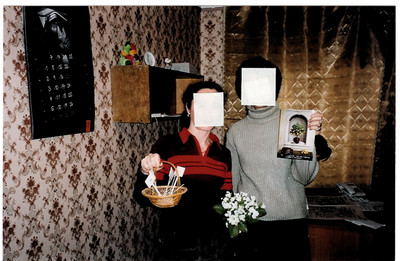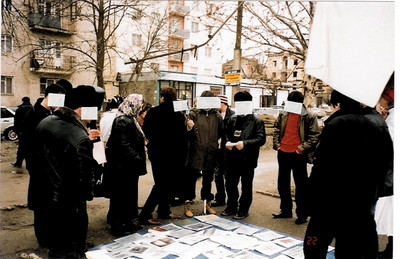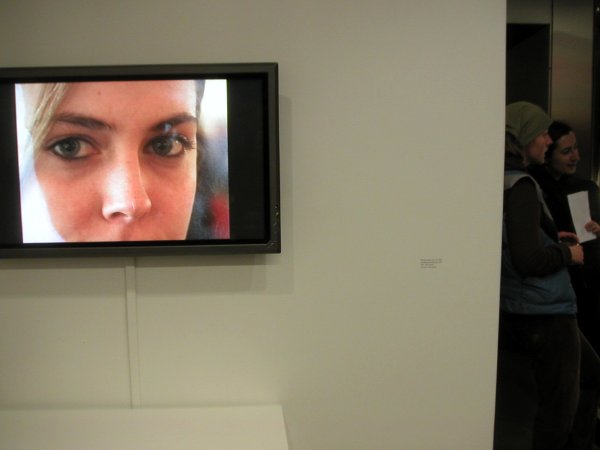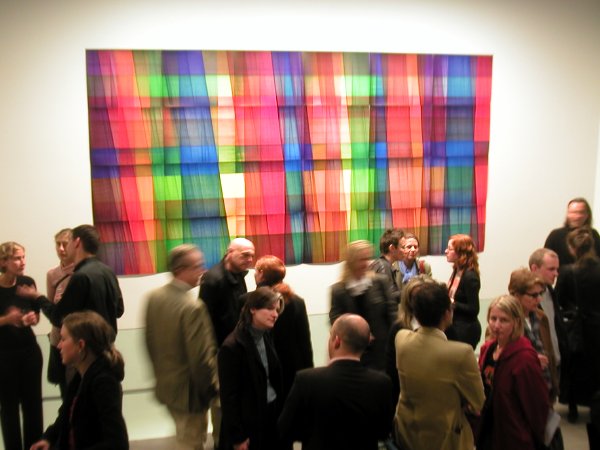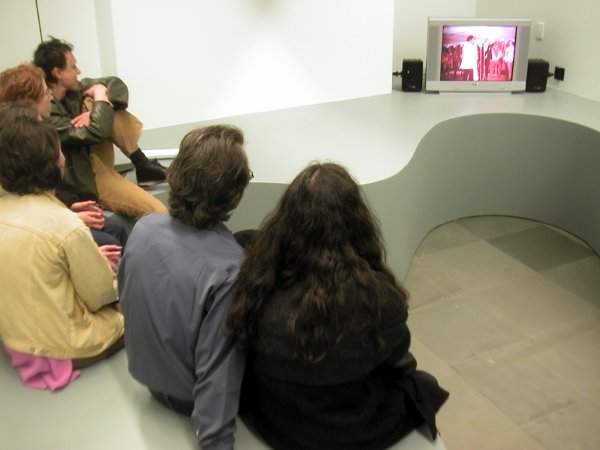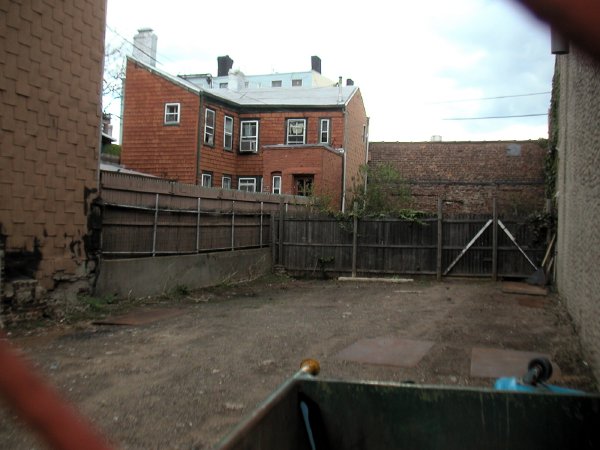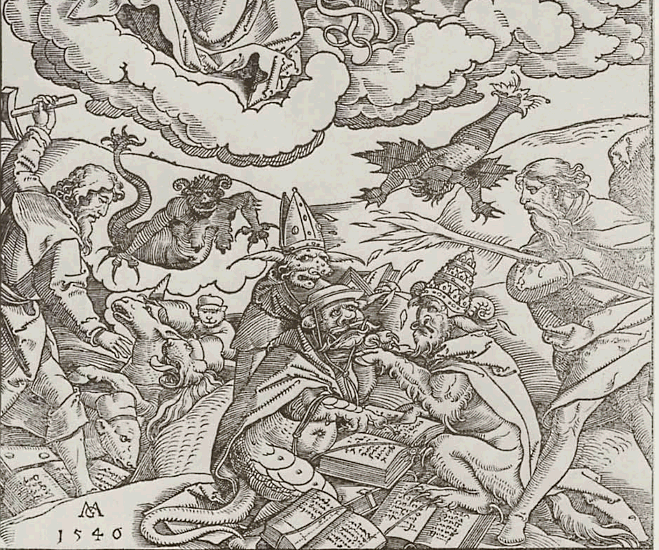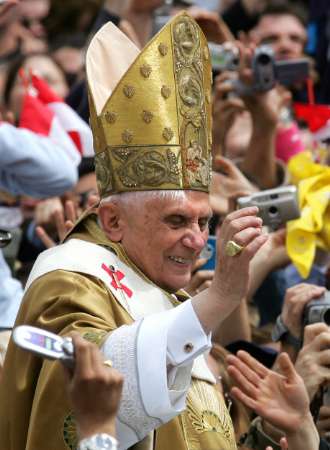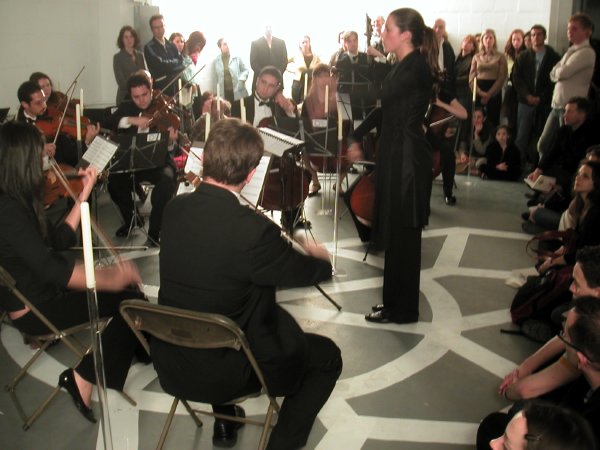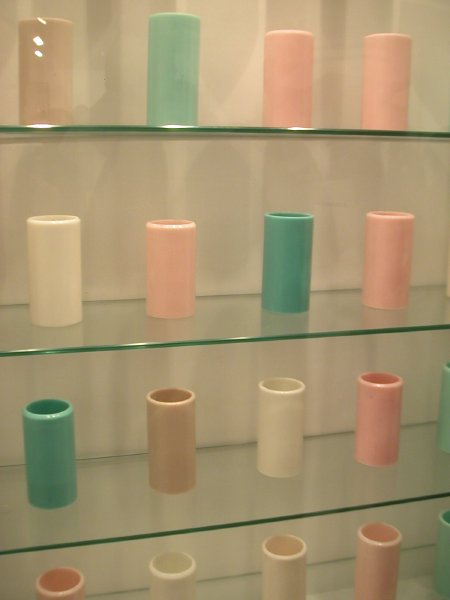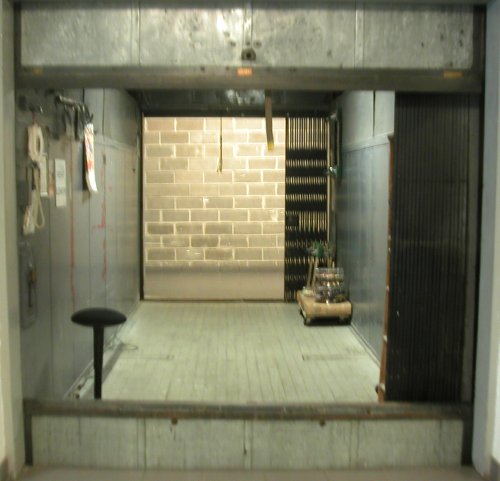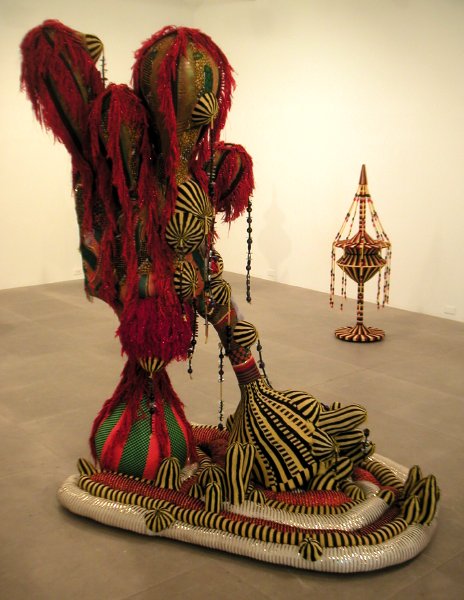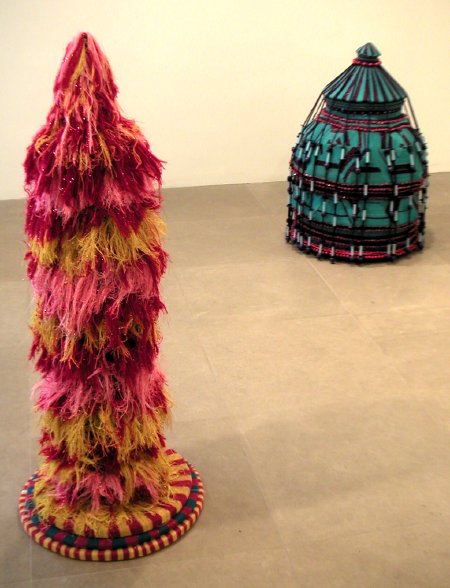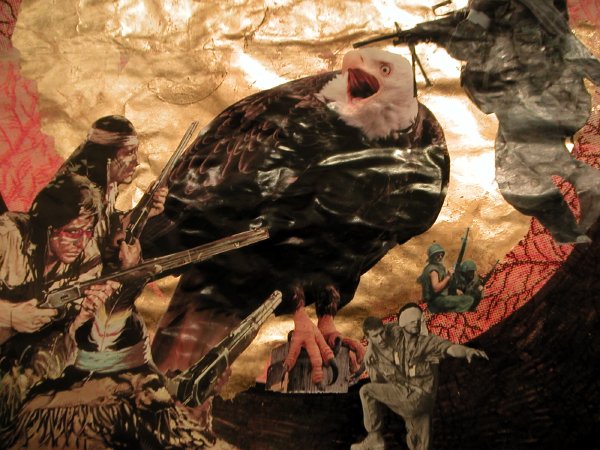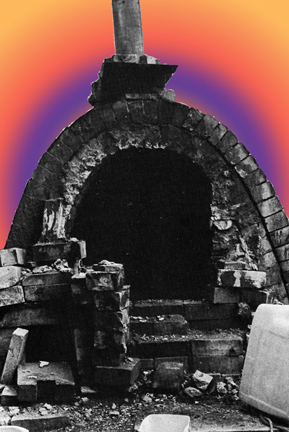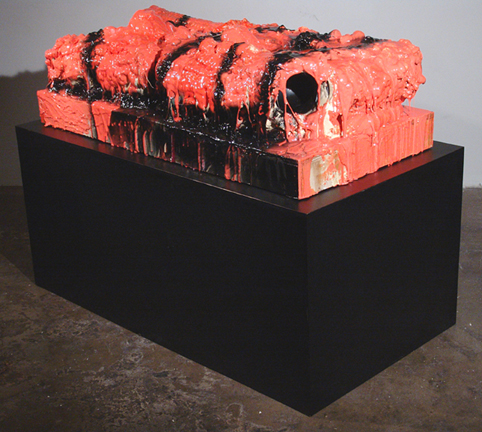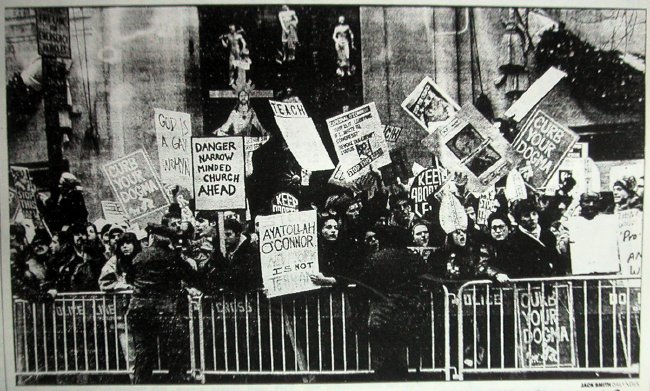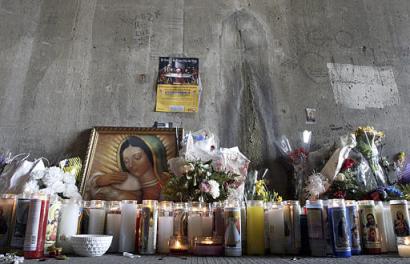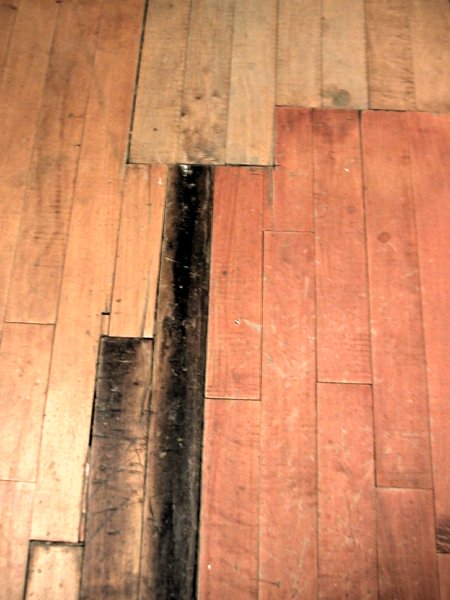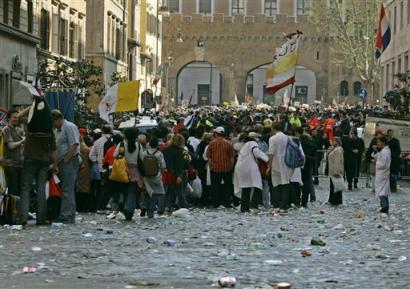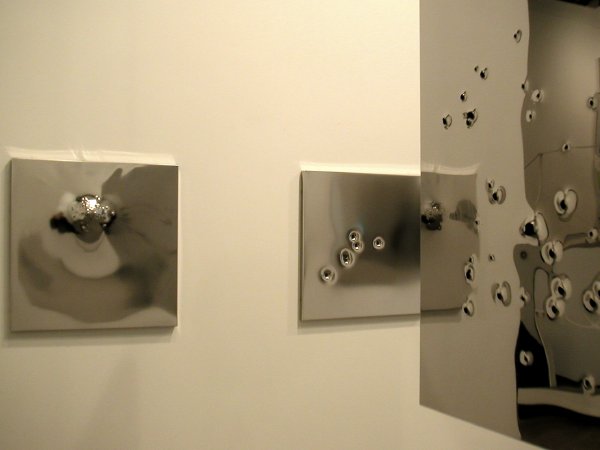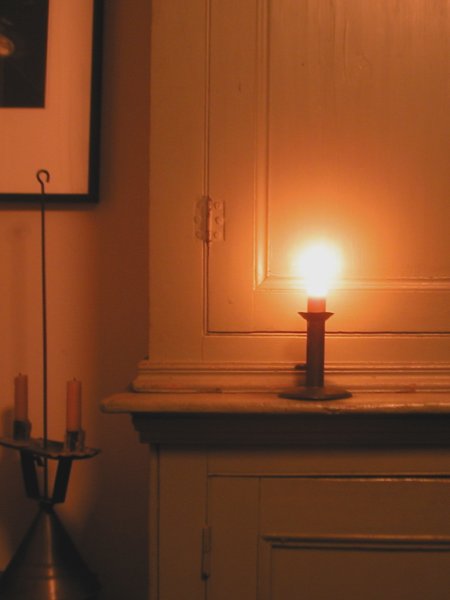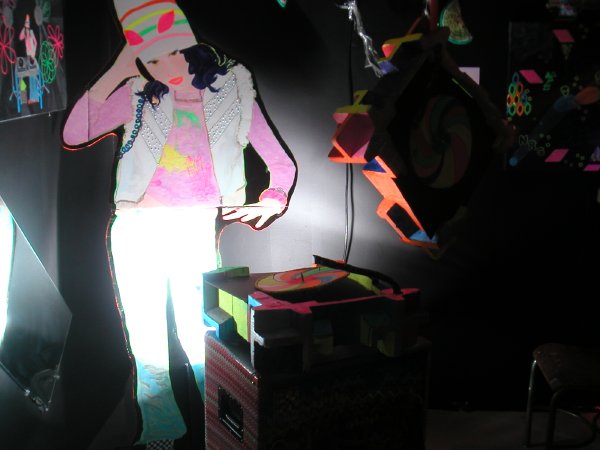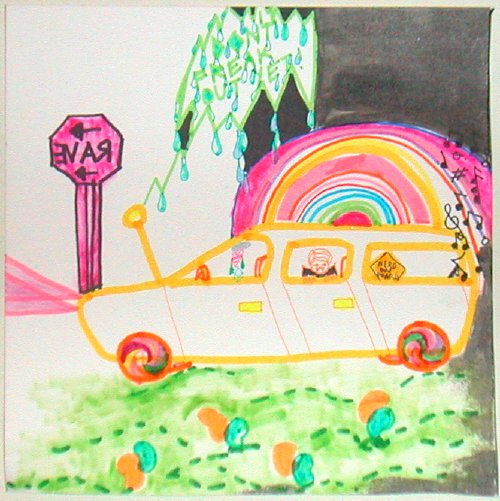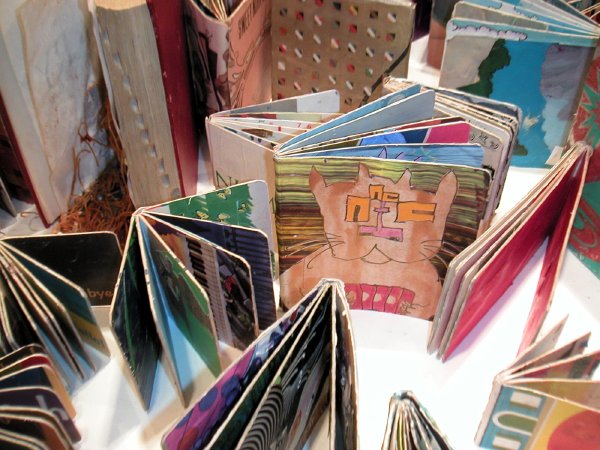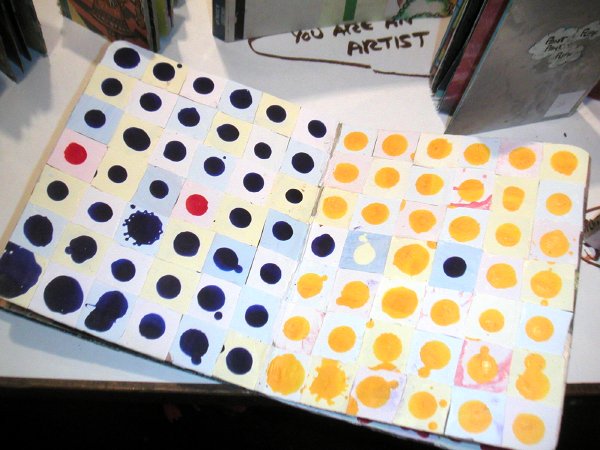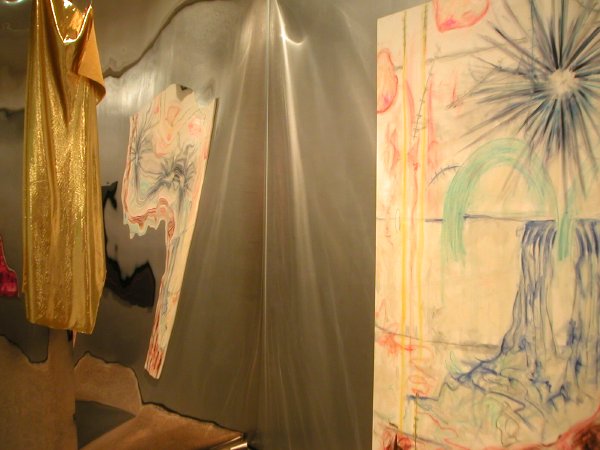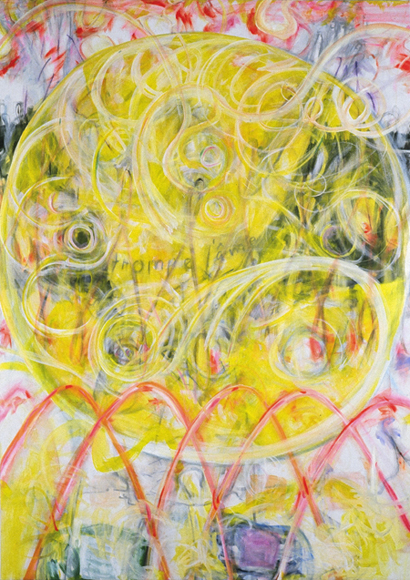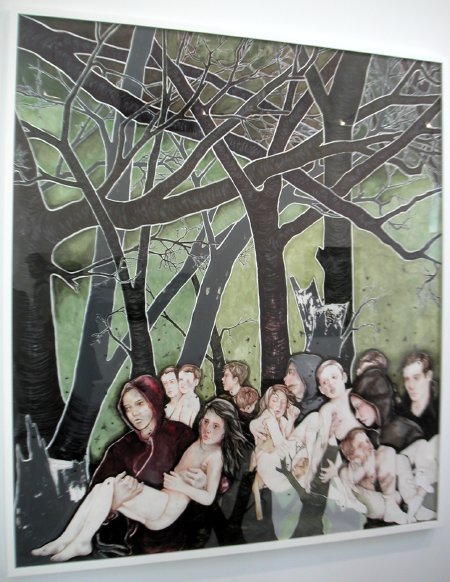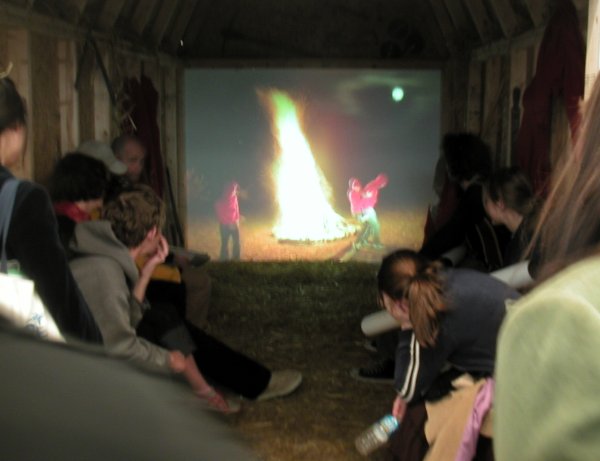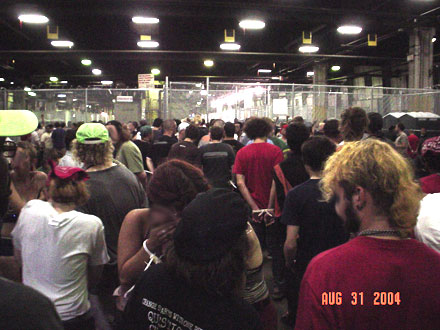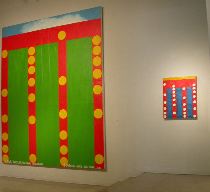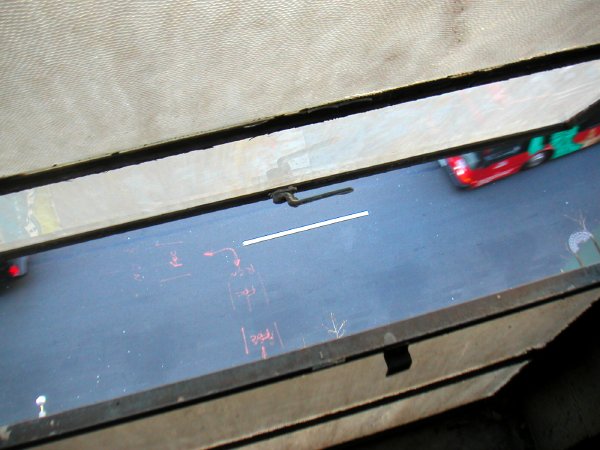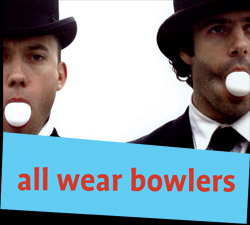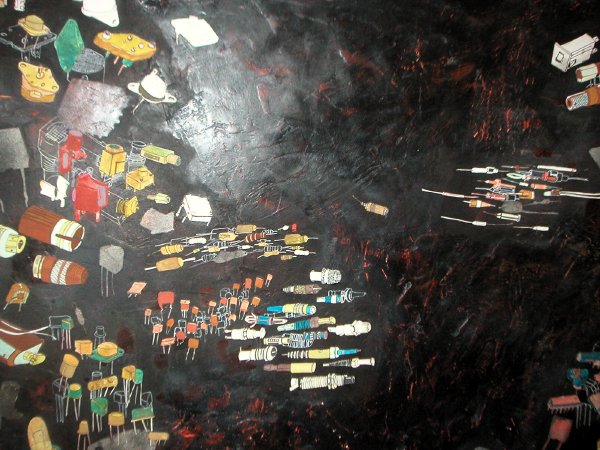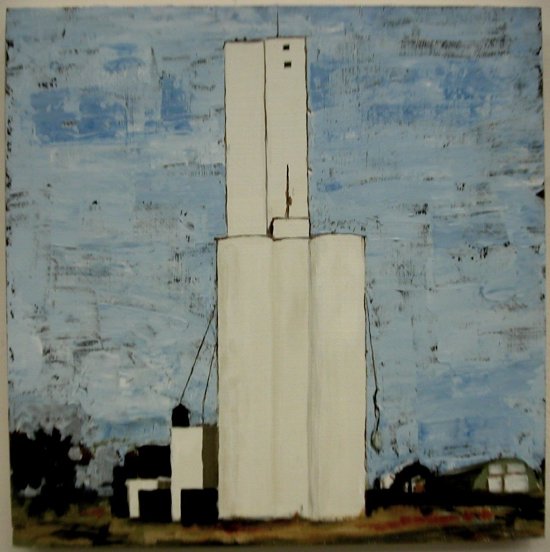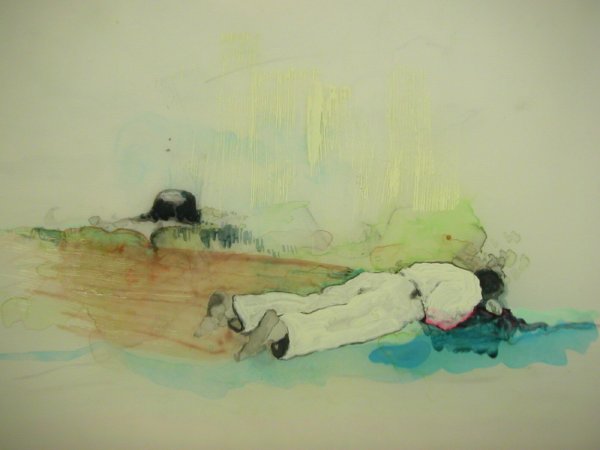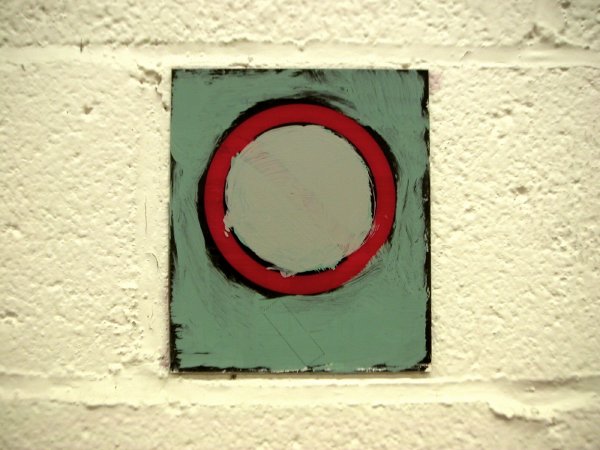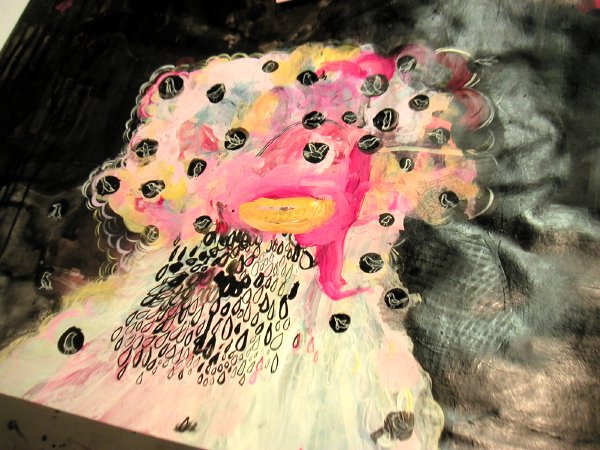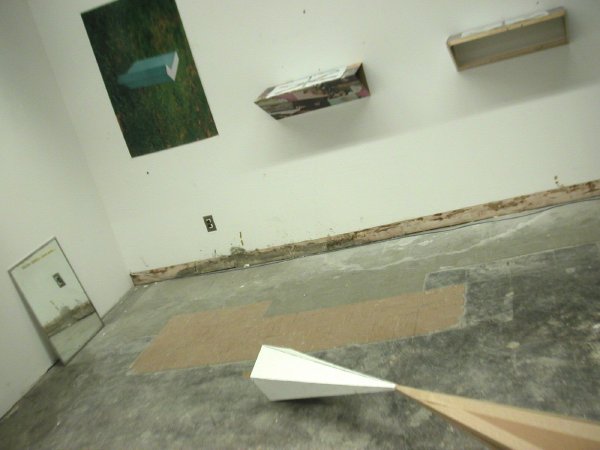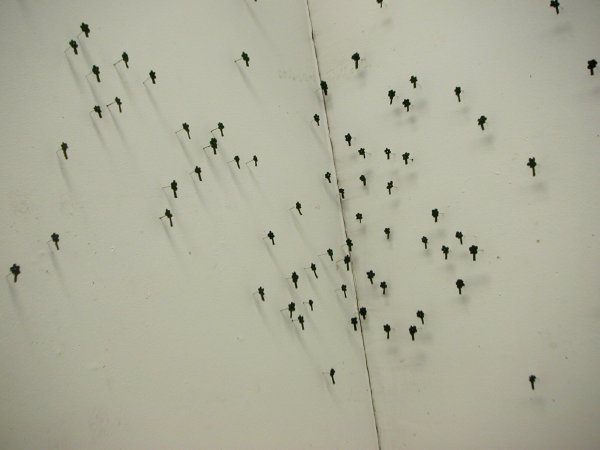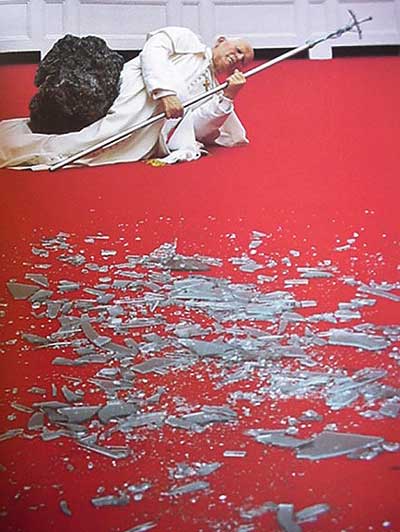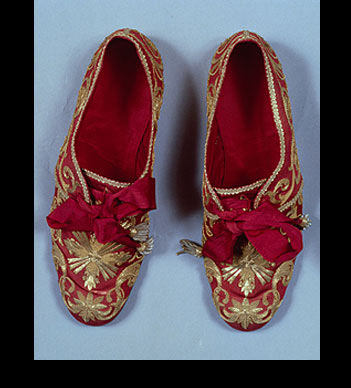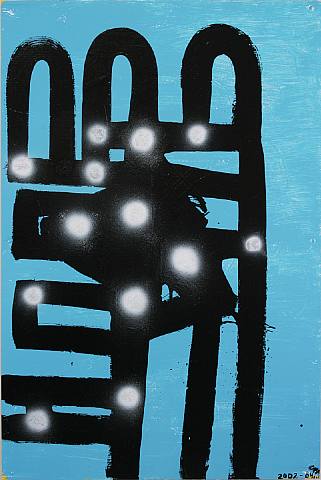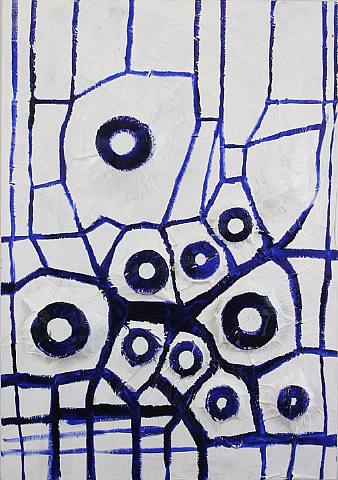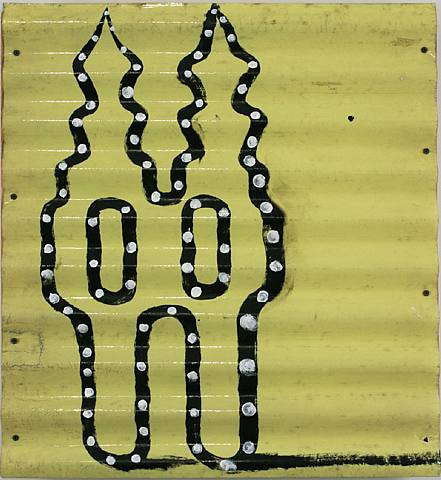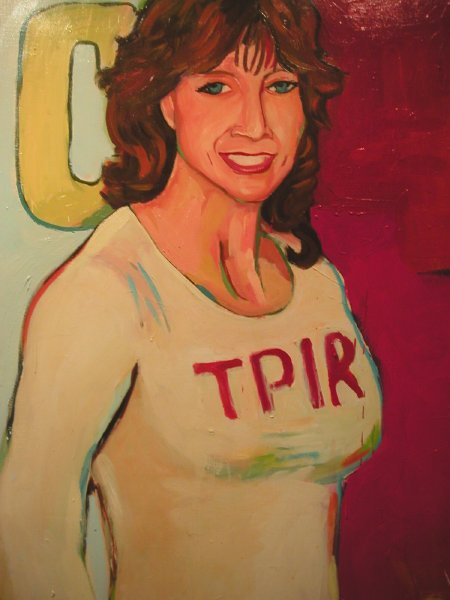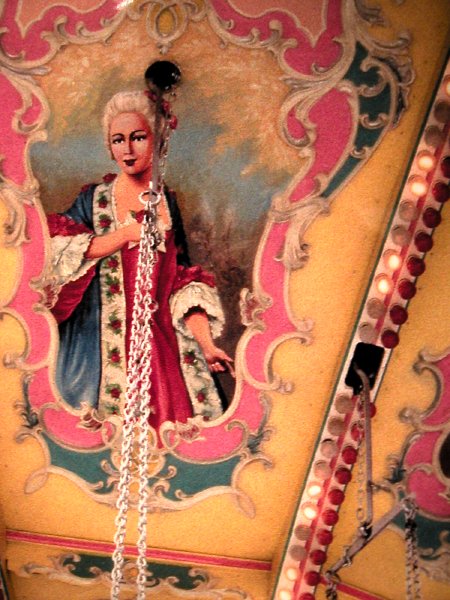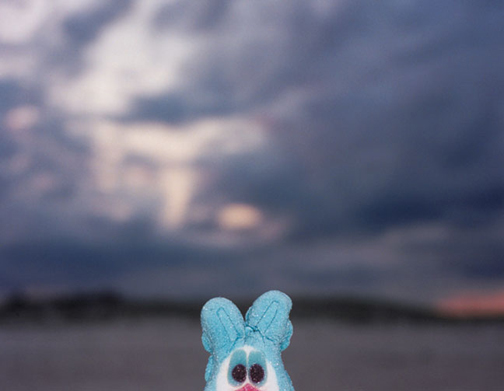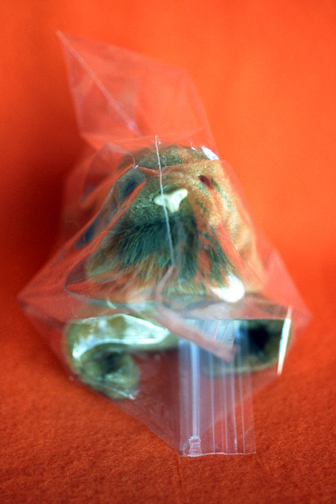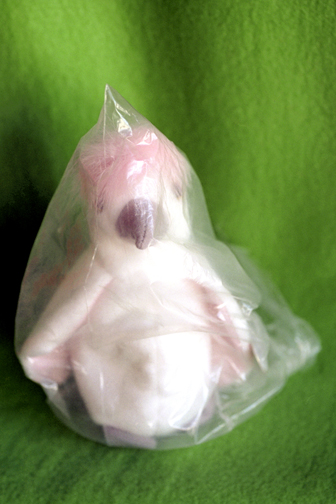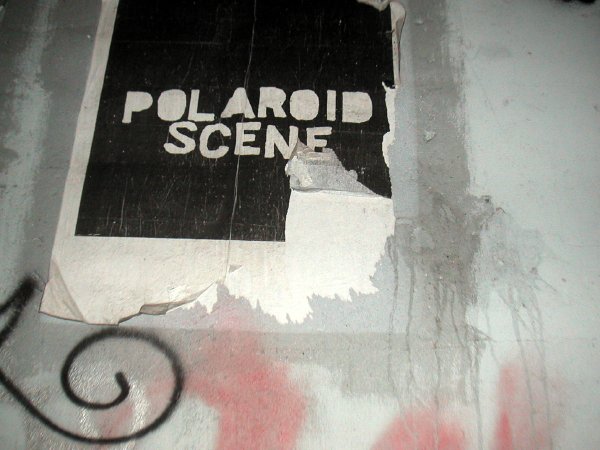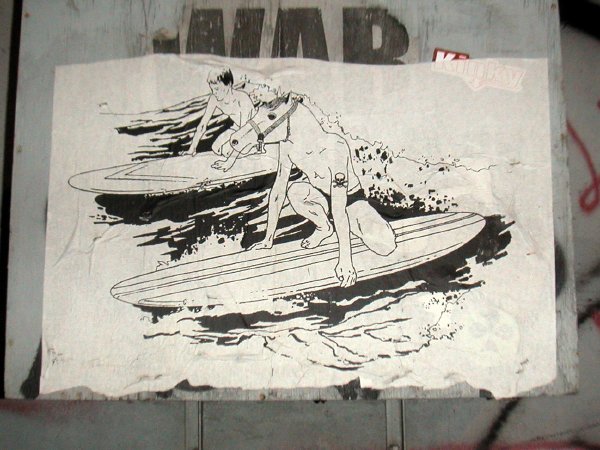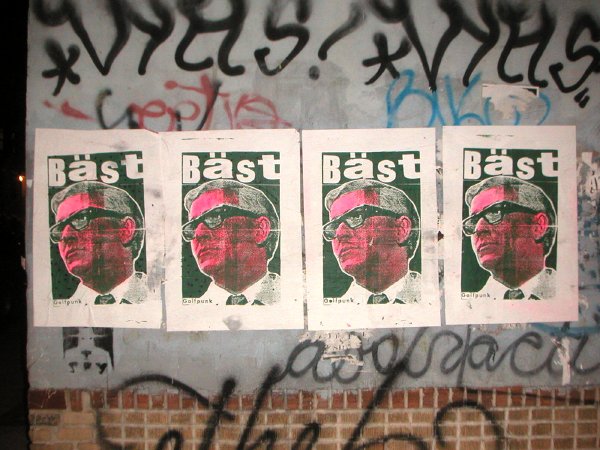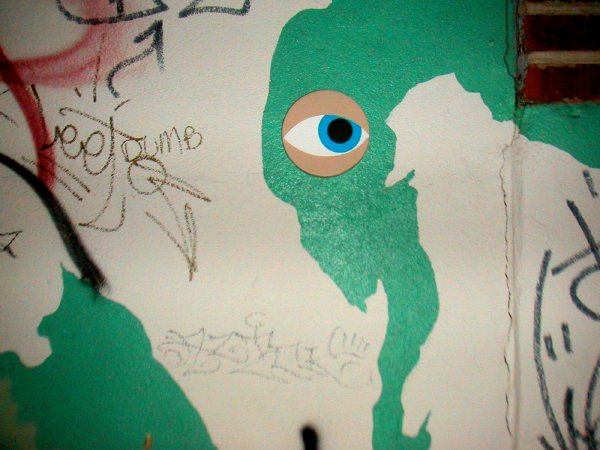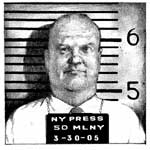
Chief Bruce Smolka as seen by the New York Press
I'd give almost anything for a jpeg of the news photo in the NYTimes this morning illustrating a story on the latest battle between New York police and folks who want to ride their bikes.
UPDATE: The photo has been found; see May 4 follow-up post.
The thug shown roughing-up a young woman in Union Square last night looks like a Black or Brown Shirt from early in the last century or, better, one of the least sympathetic targets of the social caricatures of Georg Grosz. But looks aren't destiny and perhaps we shouldn't read too much into his physique, so here are the facts alone, described by Kareem Fahim and Jim Dwyer this morning:
In one of the first arrests of the evening, a young woman who was straddling her bike and walking it out of the south end of Union Square Park was seized and personally arrested by Assistant Police Chief Bruce H. Smolka Jr.I did a Google search on Smolka and found that he has a very impressive rap sheet. The New York Press sums it up in their current issue, where the Chief is included among their annual list of the "50 MOST LOATHSOME NEW YORKERS":"You're riding your bicycle on the sidewalk," Chief Smolka said. "You're under arrest."
The woman protested that she had done nothing wrong. The chief insisted that she get off her bicycle immediately, and then he tried to pull her off. The woman argued, and then other police officers, some of them wearing plainclothes, joined the chief and forcibly removed the woman from the bike.
Ride participants tried to retrieve the woman's bike and scuffled with police officers, who then arrested a second woman.
The sight of a senior chief in the Police Department struggling in a crowded public place with the woman roused the gathering of people.
Cries of "Let her go, let her go," and "fascist state" filled the air, as Chief Smolka and other officers led the woman into a van. A line of 10 motorcycles then sealed the edge of the sidewalk at the intersection of 14th Street and Union Square East. The arrested woman began to give her name in response to a question from a reporter, but only uttered one word - "Lisa" - before she was pushed into the van and the reporter was forced away from her.
Chief Smolka is the police official in charge of southern Manhattan, and oversaw many of the mass arrests made in August before and during the Republican National Convention, including more than 100 arrests of bicyclists at a Critical Mass ride that swelled to include 5,000 riders.
February 1999: Officers in Smolka's NYPD's Street Crime Unit pump 41 bullets into Amadou Diallo. February 2003: Smolka illegally orders horseback-mounted police to charge a group of peaceful antiwar demonstrators. April 2003: Smolka confronts a group of about 100 demonstrators in front of the Carlyle Group's headquarters with 300 officers outfitted in full riot gear. August 2004: Responsible for securing midtown during the RNC, the smoldering chief could be found standing on "his" perimeter, head clean-shaven, blue eyes piercing, chin jutting, arms folded across his chest like an urban Patton. He personally oversaw the illegal arrest and detention of hundreds during the convention. Then, humiliated by August's 5000-strong Critical Mass ride, he deployed the NYPD's full force in an effort to control the monthly gathering. Until December, that is, when federal judge William Pauley ruled against Smolka's request for an injunction to stop the ride. The only upside of being arrested by this thug is that you have an excellent chance of getting off when your case finally comes before a judge.To help put this outrageous vindictive campaign into perspective, let me try to get this straight. The police will regularly pull out all stops to keep groups of bicycles off the streets with the formal excuse that they interrupt motor vehicle traffic.
[point of information: the internal-combustion engine is a fairly recent historical development in an increasingly intense and deadly competition with pedestrians and bicycles for the use of the finite area of our streets, and it is the only element responsible for the life-threatening levels of pollution which we grown to accept as routine]In the meantime, I can't safely walk down a New York sidewalk without expecting to be surprised or assaulted by bicycles swooshing past me from any direction at speeds which threaten all pedestrians, particularly the frail.
The police have no interest in these offences unless it serves their political skullduggery; I know this from having watched them ignore even the most outrageous instances, and also from trying to engage an officer's attention to such offences on several occasions. In any event, riding (not walking) a bicycle on the sidewalk is punishable by a fine (recently increased by the City Council in response to complaints), and NOT by political assault and arrest.
Thugs should not be in the business of carrying out public policy at any time or anywhere, but in New York some of "The Finest" thugs also make public policy - with total impunity, and the courts be damned.
[image from New York Press]
